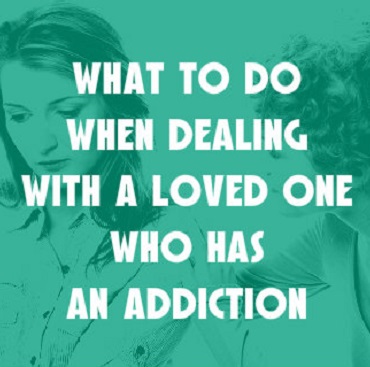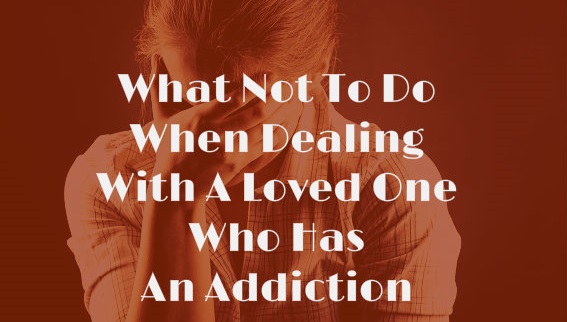A recent study estimates that close to 10% of pregnant women drink alcohol. Given the potential harm that can come to a fetus when exposed to alcohol during development, and the fact that vast majority of females at child bearing age were probably taught this at some point in their lives, this number is truly upsetting. Unfortunately, it’s also not shocking.
Some people still think that alcoholism (or other forms of addiction) is a moral failing rather than a bona fide medical disorder. Sometimes the impulse to drink can be so great that an alcoholic will put the importance of a drink over the safety and well-being of loved ones. It happens all the time with parents of young children, even when there is overwhelming evidence that the parent is a good person and truly loves their kids. Who doesn’t know someone who grew up in an alcoholic household? Is there any reason to think that the simple fact of pregnancy would be able to reign in such a terrible disease?
Condemning Addicted Pregnant Women vs. Helping Them Abstain From Alcohol
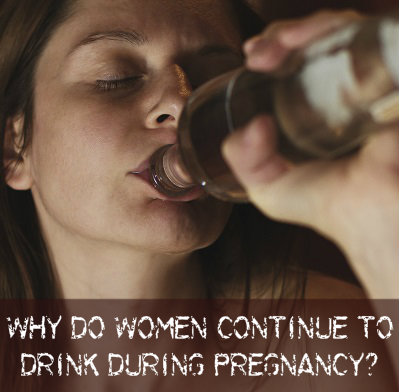 Instead of chastising and condemning pregnant women who drink, we should be devising ways to help them abstain from alcohol during gestation. For hard core alcoholics, it is entirely possible that the only way to stop them from drinking for close to a year would be to physically restrain them. Barring that, however, there are things that we can do to try to reduce the incidence of drinking while pregnant.
Instead of chastising and condemning pregnant women who drink, we should be devising ways to help them abstain from alcohol during gestation. For hard core alcoholics, it is entirely possible that the only way to stop them from drinking for close to a year would be to physically restrain them. Barring that, however, there are things that we can do to try to reduce the incidence of drinking while pregnant.
We, as a society, must be more proactive in teaching people about the risk of fetal alcohol syndrome, a complication that can happen if a mother drinks while pregnant. People born with fetal alcohol syndrome will likely have abnormal faces, growth issues, and problems in the central nervous system. These issues will not improve over time and the neurological impairments can lead to learning disabilities and behavioral issues, like attention deficit disorder. Fetal alcohol syndrome affects up to 3 million people in the US alone.
The problem with teaching about the dangers of fetal alcohol syndrome is that evidence is murky when it comes to determining how much alcohol can safely be consumed before a fetus is put at risk. It used to be, at least prior to the 1980‘s, that doctors never restricted women from drinking alcohol during pregnancy. However, at some point the medical establishment changed its tune and soon no amount of alcohol was permitted during pregnancy. Now, conflicting information can be found everywhere.
How Exactly Does Fetal Alcohol Syndrome Happen?
Babies do not inherit fetal alcohol syndrome. Instead, the ingested alcohol actually damages developing neurons and destroys brain cells. The damage can occur at any point in fetal development, even before the mother knows that she is pregnant. Once the cells have been compromised, there is presently no way to undo the damage.
Educate Teens On Abstaining From Alcohol If Having Sex
Without knowing exactly how much alcohol is safe for fetuses, the only safe option for pregnant women is to avoid drinking altogether. Since drug-related birth defects affect not only the child but society in general, more resources need to be expended to help keep pregnant alcoholics sober during gestation and continually remind women of all ages about the dangers of exposing themselves to toxic substances if there is a chance they could become pregnant. Since alcohol and sex many times go hand in hand, it is a responsible and appropriate discussion to have with kids, especially given how prevalent substance abuse is in some sub-teen populations.
Addiction During Pregnancy – All Of Our Concern
In addition to increasing the amount of materials available to women of child-bearing age regarding the dangers of drinking, medical professionals in all venues need to be more vigilant in identifying mothers who are actively drinking or are at risk of developing a drinking problem during pregnancy. Although alcohol rehab programs have begun offering specialized treatment programs for addicted mothers, the number of available beds is woefully inadequate to handle the sheer number of people requiring treatment. Hopefully governments will begin to see addiction during pregnancy as a public health crises and funnel adequate resources into handling the disease. If someone you know is drinking during pregnancy, encourage them to seek help.
Bipolar disorder is a mental illness that causes significant mood swings. It affects as much as two percent of the population and first manifests primarily in the late teens and early 20s. Although the severity and types of mood can vary dramatically among patients, the most common example of bipolar disorder is a cycling between periods of happiness and sadness, often at extreme levels (i.e. euphoria vs. despair). Although counseling can help patients learn how to identify their distinct moods, as well as the things that trigger each mood swing, many patients will also benefit from some sort of medication to help dampen negative symptoms and neutralize moods.
 It is now pretty obvious that people who are taking prescription medications, including bipolar medications, should refrain from drinking alcohol or using recreational drugs as these substances can negatively interfere with the proper functioning of the medication. In some cases, the prescriptions and other substances can negatively interact to the point of overdose or death.
It is now pretty obvious that people who are taking prescription medications, including bipolar medications, should refrain from drinking alcohol or using recreational drugs as these substances can negatively interfere with the proper functioning of the medication. In some cases, the prescriptions and other substances can negatively interact to the point of overdose or death.
The Importance Of Identifying Signs Of Substance Abuse In Bipolar Patients
Unfortunately, due to the nature of the disease, some bipolar patients are unable to refrain from using alcohol or drugs even when they are taking prescription medication for their illness. In fact, roughly half of all patients with some form of bipolar disorder also have a drug or alcohol problem. Thus, when treating a patient who has bipolar disorder, mental health professionals must be vigilant in identifying signs of substance abuse or alcoholism as the two illnesses tend to go hand in hand.
Scientists have yet to discover a definitive explanation for the high incidence of substance abuse among bipolar patients. In fact, the real explanation likely entails a combination of factors. For instance, genetics may play a pivotal role — a family history of substance abuse plus bipolar disorder increases a person’s risk of having both diseases. Further, bipolar disorder can be a tough illness to treat. Although certain medications have been shown to be successful in alleviating certain bipolar symptoms in many patients, there is currently no cure for the disease and no one magic medication that renders all patients symptom free. As such, many patients use drugs and alcohol as a way to escape the symptoms of or fallout from the disease. This phenomenon is known as “self-medicating” and is often found in patients with the more debilitating mental illnesses, including bipolar disorder.
It turns out that doctors must be especially vigilant when it comes to identifying substance abuse in female bipolar patients. Studies show that females suffering from bipolar disorder are several times more likely to abuse alcohol than men with bipolar disorder. Although men with bipolar disorder also have a higher incidence of alcoholism than men without bipolar disorder, the rate is nowhere near as high as with women.
Factors For Bipolar Disorder
While it could certainly be true that bipolar patients have a higher predisposition to addiction than non-patients, both family history and the fact that bipolar patients tend to self-medicate with drugs and alcohol is more likely the culprit behind such a high rate of alcoholism. Researchers at UCLA conducted a study of roughly two hundred and fifty bipolar patients who were being treated at UCLA on an outpatient basis. The results of the survey showed that the males with alcohol problems were more likely to have a history of alcoholism in their families than males without such alcohol problems.
However, female participants with alcohol problems did not report similar rates of family alcohol problems. Instead, these patients reported co-occurring issues with anxiety and depression. Thus, researchers hypothesized that women bipolar patients were more likely to self-medicate than their male counterparts. Unfortunately, research also suggests that women are less likely to seek help for drinking problems than men. This puts female bipolar patients at high risk not only for alcoholism, but for untreated alcoholism.
Read More About Addiction And Mental Health – There Is Hope!
Continued From – How To Handle A Loved One With An Addiction – Part 1
No one is born with a set of instructions on how to handle an addict. My perspective on what tends to work and what doesn’t, or perhaps better said, what can be helpful and what definitely is not, is born of my own experience as an addict. When I was ready to recover, and when I wanted it because it was what I knew I needed, it mattered little what people had said or hadn’t said. Nonetheless, looking back, I can see that some approaches were helpful while others resulted only in resentments I had to later work through in recovery.
What Is Helpful When Dealing With An Addict
By labeling these ideas “helpful,” I do not mean to imply that they will achieve the desired result of getting the addict to get clean. It is rather to say that these approaches are less likely to do harm and are more likely to help maintain a relationship of trust between you and the addict. In the end, the addict has to choose recovery because she wants it—not because you do.
Give Space
Addicts are already isolators, so it may appear that all they want is more and more space and time to be alone and practice their addiction. By giving space, I mean to say, emotional space. Keep the addict near and continue to engage to the degree that she is able or willing. But refrain from making every conversation or occasion together about the disease. The addict already feels the all-pervasiveness of it. You don’t need to keep bringing it up or checking in.
Share The Struggle
Many families of addicts make the mistake of keeping the issue a secret. This failure to reach out is generally based in the fear of the stigma attached to addiction and mental illness. But you need support and help in what may be a very long battle. Start by speaking with a pastor at your church or with trusted family friends. You do not need to be ashamed, this is no one’s fault. Addiction is painfully isolating not only for the addict but for the family who has to live and deal with the secret problem as well. Humble yourself to bring others in for support.
Get Help For You
Addiction touches and traumatizes the lives of everyone in its midst. Family members and even friends can benefit from counseling or a series of Al-Anon meetings. Become educated about the disease and learn what you can and cannot realistically expect from an addict. Learn to recognize patterns of manipulation and become aware of your own potential tendencies for co-dependency and enabling. Find out how to set proper boundaries around a person with addiction and get the support you need in sticking to them. Programs like Al-Anon are miraculous in helping those who live with addicts to understand what their role is in dealing with an addict.
While I was blessed with recovery from my anorexia, I watched another young girl lose her life to it at the age of 24. If the addict you love does not find recovery, you must not blame yourself. You cannot save someone who will not be saved. By the same token, you cannot, even by poorly chosen words and unthinking behavior, stop someone from seeking recovery and getting well if that is what they have decided to do.
There is no easy way to approach, handle or talk to a loved one struggling with addiction.
If you have an addict in your life, expect it to be difficult, awkward and uncomfortable. There will be good days and bad days, there will be small successes followed by perhaps greater setbacks. You will be pushed to your emotional limit and you will be forced to face your own inability to change a person you love. You will be wholly incapable of making him see that what you want is what’s best for him.
Helping Those Dealing With Addicts
Dealing with addicts isn’t intuitive. We don’t simply discern how to get through to them or how to interact with them based on common sense or reason. While respecting addicts as people, it will help the non-addicts in their midst to understand that reason, good sense, morality and self-preservation are no longer part of a framework within which they operate or a common ground upon which to meet.
But that doesn’t mean we write addicts off as crazy and give up hope. Having been an addict myself, I had a lot of people around me trying to help or cure or fix me in different ways. From the vantage point of recovery, I can now look back and comment on what was helpful and what wasn’t. Even a decade later, I remember how the people around me treated me when I was drowning in the despair of my addiction. While nothing you say will make or break an addict’s chances of recovering, there are ways of communicating and interacting that are harmful and pain-inducing, and there are better, more helpful ways of trying to relate to a person who is indeed quite sick.
What Not To Do When Dealing With An Addict
Guilt Trips
Yes, the addict is making everyone’s life difficult and causing a lot of unnecessary pain and suffering. She breaks plans, she fails to keep her commitments, she is unreliable and unpredictable. And guess what: she already knows it. Asking things like, “Do you realize what you are doing to your mother?” or, “Don’t you understand how you are hurting us?” are not helpful. The addict, though selfish in the extreme, is not oblivious to the pain, difficulty and chaos she is bringing into the lives of those around her. But she is not able to stop it. A guilt trip presupposes that the person being guilted is acting deliberately or out of malice. It assumes that he or she has some control over the offending behavior. An addict does not.
Bargaining
You’ll do anything, make any promise, as long as the addict will agree to stop the addiction and get help. But the addict is powerless to take you up on that offer. The addiction is boss. As appealing as your offer might be, it simply isn’t possible. Addicts are known for high-stakes gambling. They gamble their families, their jobs and anything good they can claim. They know what they have to lose and they do it anyway. They don’t do it because they don’t care; they do it because the illness is in fact that powerful and enslaving.
Endless Pleading And Cajoling
This is also known as nagging and it is never helpful or effective. It’s not that the addict doesn’t care, it’s that she cannot stop what she is doing on the basis of your wishes—even if she wanted to. The disease is a lot stronger than that. It’s a lot stronger than she is. In the end, the addict may tell you what you want to hear, but then go back to business as usual. She knows you think there is a problem. You don’t have to continue to restate it.
Implying Fault Or Agency
Loved ones must burn into their minds that both substance and process addictions are not choices that the addict is making. As a result, blaming addicts or implying that they are practicing their addiction simply because they are selfish and unloving is not only incorrect, but cruel. Understand that the addict is in the grip of something much bigger than him or herself. Addiction is an illness like diabetes or cancer. You may hope that addicts will take the appropriate steps to manage the condition, but it is unhelpful to imply that they do what they do on purpose.
Ignoring The Issue
If there is nothing that can be said to make an addict want to seek help, and if the nagging and the pleading are ineffective, does that mean it’s better to say nothing at all? Is it better to ignore the issue, make the best of it or hope it all just goes away? No. Something does indeed need to be said and maybe even done, but the ways in which you speak and act hold the difference between showing genuine love and support, and being a nuisance and a nag.
While your words and expressions of concern may not effect immediate change in the addict’s life, while they may not leave your chat promising to check into treatment, the addict will benefit from the knowledge that you cared enough to say something out of concern and love. Don’t pretend there isn’t a problem.
Continued In – How to Handle A Loved One With An Addiction – Part 2
When you look at the numbers, it can be discouraging to see how many teenagers continue to experiment with drugs and alcohol as this often leads to addiction. What most teens have difficulty comprehending is how this behavior could affect them for the rest of their lives.
Types Of Drugs Teens Experiment With
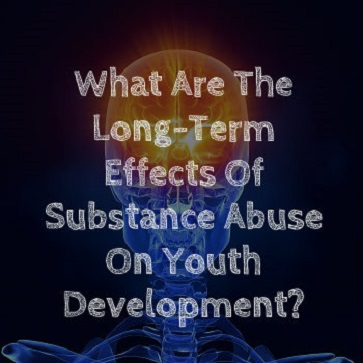 Just over one million American teenagers are addicted to illegal drugs, with another 915,000 addicted to alcohol. Even if they’re not addicted, an alarming number of teens are regularly using, with over half of high school seniors reporting having experimented with drugs and close to 30 percent having tried something other than marijuana, like heroin, cocaine, prescription drugs, inhalants, sedatives and mind-altering hallucinogens. The highest rate (19.9 percent) of illegal drug use occurs between 18 and 20 years, with the next highest rate (16.4 percent) happening between 16 and 17.
Just over one million American teenagers are addicted to illegal drugs, with another 915,000 addicted to alcohol. Even if they’re not addicted, an alarming number of teens are regularly using, with over half of high school seniors reporting having experimented with drugs and close to 30 percent having tried something other than marijuana, like heroin, cocaine, prescription drugs, inhalants, sedatives and mind-altering hallucinogens. The highest rate (19.9 percent) of illegal drug use occurs between 18 and 20 years, with the next highest rate (16.4 percent) happening between 16 and 17.
Alcohol use affects more than 10 million teens, with 5.1 million regularly binge drinking, which is defined as downing more than four or five drinks during a single sitting. Not far behind is inhalant abuse, with 25 percent of all teens 10- to 17-years-old saying they have friends who inhale dangerous fumes from things like paint, computer cleaner or glue.
Teen Drug Use Can Have Negative Effects For Years To Come
Unfortunately, the bad choices made in youth can haunt for years to come. The brain undergoes vital development during adolescence. Not since infancy has their brain been changing and forming with such rapidity.
Drug use can disturb the proper development of the prefrontal cortex in the brain. This area of the brain is responsible for important functions like organization, risk assessment, impulse control, consequence prediction and planning. But the limbic system, corpus callosum, hippocampus and cerebellum are all still forming and vulnerable to the changes wrought by drugs. Functions like emotional control, goal-setting and memory/recall are all still developing, and drug use could cause permanent problems in these areas.
Studies have repeatedly shown that heavy marijuana use damages key brain functions for years, with some researchers believing the changes are permanent. Processes like critical thinking, planning and complex attention are all shown to be diminished by heavy marijuana use. Girls seem to experience longer-lasting ill-effects, but both females and males show problems with myelin sheath formation, which affects brain signaling.
MDMA, which also goes by Molly and ecstasy, is associated with sensations of euphoria and social bonding, which is why it’s popular with young people attending large group gatherings such as concerts and dance clubs. Ironically, lowered serotonin levels as long as seven years have been observed in laboratory animals after they’ve been given MDMA, with serotonin closely associated with emotional happiness.
Alcohol causes harm to adolescent brains as well, especially binge drinking. Heavy drinking in teens has been shown to lower their ability to problem solve and understand spatial relationships, as well as memory and vocabulary impairment. And just like drugs, alcohol affects the limbic system, meaning emotional well-being is disrupted. In fact, there appears to be a connection between drinking and behavioral problems due to a lack of emotional control — researchers just aren’t sure which problem came first.
Using drugs and alcohol during adolescence can have serious and long-lasting results, with neurological development issues, impaired social development and addiction. And all of these problems can easily follow teens into adulthood.
Read More About The Effects Of Teen Substance Abuse On Families
Coroner Rules Cory Monteith’s Death Due to Heroin and Alcohol Use
According to the U.S. Department of Health & Human Services, heroin addiction is a chronic, relapsing brain disease. With intermittent abstinence, the body loses its resistance to the user’s drug of choice, which makes overdosing more of a probability. Some believe this might have been the case with Glee actor Cory Monteith.

Courtesy of: www.hdwallpapersinn.com
Canadian-born Monteith, 31, was found dead in a Vancouver hotel room in July alongside a hypodermic needle and spoon covered in drug residue and two empty bottles of champagne. He played the hunkish Finn Hudson on the show, a character with a heart of gold.
The coroner’s report found that Monteith succumbed to a mixture of alcohol and intravenous heroin use, with the death ruled accidental. He was alone at the time.
Young Celebrities Who Have Died From Drug Abuse
In recent years, a handful of actors have failed to live out their 30s because of addiction: River Phoenix collapsed outside a popular Hollywood nightclub in the early 1990s after overdosing on a combination of heroin and cocaine; Heath Ledger died a couple of years ago after succumbing to prescription drugs; Corey Haim, a 1980s child star who battled addiction since he was 15, died in 2010 after taking several forms of depressants and an anti-psychotic drug.
Monteith’s Early Drug Use
In Monteith’s case, he came out to the media with his drug problems, saying he began smoking marijuana at 13 and was abusing hard drugs by 16. He admitted to one publication that he felt lucky to be alive after some of the drug-fueled episodes he had gone through.
Every year more than 200,000 heroin addicts are imprisoned. So what can be done to help?
Naltrexone For Reversing Effects Of Heroin Overdose
Naltrexone is a drug that reverses the effects of a heroin overdose, but it’s been shown to be ineffective as an addiction treatment drug. Other drugs used as treatments are more addictive than the heroin addiction they’re supposed to be treating. At present there is no pharmaceutical cure-all for addiction.
Silver Lining – Cory Monteith’s Fan’s Learning Of Drug Abuse’s Dangers
Experts agree that if heroin addiction is perceived and treated as the chronic brain disease that it is, the stigma surrounding the issue will be lessened and more treatment avenues will be established. While Monteith’s case is tragic, it’s possible that his young fans may have learned about the dangers of drug abuse instead of following down his path.
Charlotte has been summoned by her father. She must leave Paris at once and head back to New York or he’ll probably do something drastic—like take away her monthly allowance. It will be two more years before she’s eligible to access her trust accounts, and so she is dependent on that money for everything she needs—vacations, parties, dresses. There’s something she’s been spending more and more of her money on lately, however; and of course her father couldn’t know anything about it. He never pays attention to her life except when he needs her to make an appearance and pretend to be the “respectable daughter” of his family’s massive fortune.
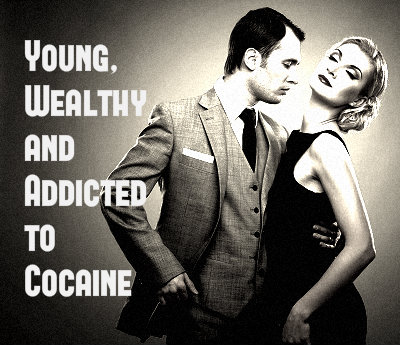 She scrambles around first in her Lanvin tote and then in the Louis Vuitton at her feet—there it is. She comes up with a small baggie of white powder and dumps a mound of it onto a compact mirror. Her father’s jet hasn’t left the tarmac, but Charlotte is already flying.
She scrambles around first in her Lanvin tote and then in the Louis Vuitton at her feet—there it is. She comes up with a small baggie of white powder and dumps a mound of it onto a compact mirror. Her father’s jet hasn’t left the tarmac, but Charlotte is already flying.
The entire winter has been as buzzy and unfocused as she is now. Night after night after night—turning into stretches of days—the young socialite smokes heady French cigarettes, drinks bottles and bottles of champagne and snorts the white powder with growing regularity. Interspersed are the nights spent on “molly”—or MDMA—and once or twice trying a drug she didn’t know until afterward was angel dust, or PCP.
It’s snowing all the time, whether it’s snowing or not. The heiress has a dull headache in the front of her skull that won’t go away and her normally waspy body is down several pounds. The Stella McCartney pantsuit she’s wearing fit her so much better only two weeks ago when she bought it in London. She’s waifish in the way her class and gender are expected to be, but far more so; she is deadly thin. Still, as Charlotte puffs on the cigarette, her teeth gleam in a grin as she exhales; she feels gorgeous, brilliant as a diamond.
But her father’s assistant sits stricken. Charlotte’s nose is dripping blood onto that winter white suit. This is the first time the woman has seen her employer’s daughter look so ungodly ill—there are dark circles under her eyes; her face is gaunt and dull despite the bright coral Dior lipstick. When did the girl take up smoking? As she reaches for a bottle of tonic water to daub the stain, she notices the baggie. The two women meet eyes; both know this will be a very long flight.
Crack Cocaine – An Equal Opportunity Destroyer
When you think about crack cocaine addiction, young women and men lost to the illusions painted by the dangerous highs of angel dust, stuttering speech and the smear of mascara, you probably think of the inner city. Young people with hopeless futures and no way out; little money and nowhere to go with whatever potential they might possess. But this tableau is just as common among the prep school lot of the Upper East Side. Wealth and power know the pain of addiction as well as any other class. Picture the celebrity heiress, falling from grace on the cover of Page Six. She could go anywhere, have anything—why does it happen?
Sigrid Rausing, Swedish philanthropist, anthropologist and publisher put it aptly: “The pros of inheriting great wealth, I believe, are largely illusory and can become pathological. An illusory sense of being special and different, the assumption that one is interesting to other people only, or mainly, because of the money, and subsequent feelings of isolation.”
Isolation. For those outside the 1 percent, it can be hard to imagine how the proverbial keys to the kingdom might lead one to a sense of alienation, but imagine: you have everything in the world, everything many others would take from you in a heartbeat; you can never be entirely certain whether those who remain close to you do so for the privilege your prestige brings or whether you truly matter to them; and a great portion of the world is hoping you will fail. You have no need to work, no need of avocation except as hobby. A 20,000 square foot beach house in the Hamptons, a penthouse apartment in Manhattan, and half the island of Barbados may be yours, but what of meaning? Purpose? Those things must be created by each of us; they are never inherited.
According to William F. Messinger, “More than just a distraction, addiction fosters complex dysfunction that affects families on multiple levels: from the rampant financial drain to support the addict’s habit to the exhausting tension and family conflicts to the public relations nightmares of outbursts and arrests. It’s a problem that can threaten the very underpinnings of the family’s wealth and security.” While no one elects at the outset to become riddled with the problem of chronic addiction in order to advance the demise of his or her life or that of the family name, families would do well to consider the problem of addiction as serious as diabetes or cancer, and as likely to advance if not taken seriously.
Recovery Is No Easier, No Matter Who You Are
And therein lies the rub. While the very wealthy may be able to afford the finest recovery centers, the best doctors and the most up-to-date, ongoing care for their addicted loved ones, the problem of addiction reaches into the very depths of who we are as people, and is a battle which must be fought daily. No outside help can do the fighting for you. A middle-class individual may feel more able to walk into an AA or NA meeting and trust the anonymity inherent in the group’s mission. She can largely trust that others will be in the meeting with lives and problems much the same as hers, but when you come from the very highest echelon along the social class structure, you may fear showing up at all for fear of making too vulnerable your family’s name or security. This is not stated as a reason to feel sorry for the wealthy; it is simply a fact. No matter who we are, or what we have, if we deal with the problem of addiction, we must suffer its consequences.
Money and status can buy many things. Unfortunately, they cannot secure a life free from the stranglehold of addiction, or entirely clear the devastation wrought after addiction has taken its hold. They can, however, if a person is willing to invest the time and interest, provide a life where making oneself well is at least financially possible, and where creating purpose and meaning can be carved out should one choose. It is the purpose and meaning part, after all, which will carry us through into recovery, no matter who we are.
09 Oct 2013
Baby Boomers And Addiction – Part 2
Continued from Baby Boomers and Addiction – Part 1
There may be nothing specific to baby boomers that puts them at a higher risk of addiction, but their numbers will challenge the system. In order to adequately meet the need, new treatment approaches are being developed. The New York Times articles “Advice on Addiction in Boomers” Part 1 and Part 2, answer readers’ questions on the issue of addiction in this demographic.
Dangers Of Senior-Related Addiction
People in this age group will experience the greatest risk for alcohol-related health conditions such as heart disease, kidney failure, and liver disease. They also face the risk of falls and alcohol-related injuries that are made more severe by age.
Boomer-Based Approaches To Treatment
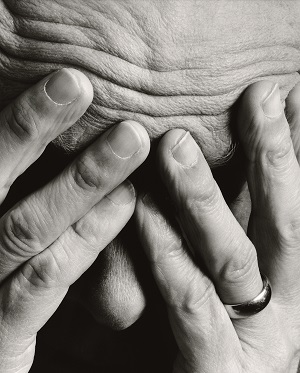 While people are people and addicts are addicts, the Baby Boomers have always been, to some degree, their own animal. This has inspired new approaches to treatment and recovery designed to take characteristics of this population into consideration in developing more effective approaches.
While people are people and addicts are addicts, the Baby Boomers have always been, to some degree, their own animal. This has inspired new approaches to treatment and recovery designed to take characteristics of this population into consideration in developing more effective approaches.
Dollars and energy naturally go to preventing drinking and educating about alcohol related dangers in the teenage and college population, but statistically, they are not the problem. Older adults often fly under the radar with their problem alcohol use. They assume, by virtue of being adults, that they have their drinking under control. They drink more covertly, it is accepted in their social circles or they isolate and are harder to keep track of.
The question naturally arises: what is the likelihood of recovery for individuals in this demographic? Is it possible to reform after so many years of consistent heavy use or abuse? Is it possible to ‘teach an old dog new tricks?’
According To Dr. Krantz:
“The longer an individual uses a substance, the more changes there are to the chemistry and the neuro-pathways in the brain. The brain essentially becomes re-wired as a result of substance use. In recovery, with abstinence, those pathways can begin to heal, regardless of how long a person has been addicted. Despite the healing of the brain, the disease is forever imprinted, which is why recovery needs to be a lifelong process.”
Concerns Of Adult Children
Boomer alcoholics are raising levels of concern among their adult children—those old enough to recognize a drinking problem and motivated to help their parents find recovery.
Often it is the adult children of substance abusers who are questioning and confronting the disturbing habits and seeking out treatment information for their parents. Thus information and support directed at children on how to help or deal their addict parents will also be needed in coming years.
Societal Impact Of Treating Aging Addicts
The primary concern is increased health care costs as a result of the need to treat a large group of addicts with expensive residential recovery programs. While the past years have seen a decrease in binge drinking and alcoholic patterns in younger generations such as the Millennials, there has been a marked rise in the boomer-aged adults that have been admitted to the hospital for binge drinking, or who have needed medical treatment for drinking related conditions and injuries. Alcoholism also has the potential to exacerbate other pre-existing health conditions thus requiring a higher level of medical care and prescription drug use.
What Can Adult Children Do To Help Addicted Seniors?
Adult children can begin by becoming aware of what constitutes alcohol abuse. According to the piece in The New York Times:
“Several readers asked how to determine if a loved one has an issue with alcohol. The Centers for Disease Control and Prevention defines heavy drinking, or alcohol abuse, as ‘a pattern of drinking that results in harm to one’s health, interpersonal relationships or ability to work.’ Alcohol dependence, also known as alcohol addiction or alcoholism, is a chronic disease with symptoms including ‘continued use despite repeated physical, psychological or interpersonal problems.’
Some other important questions to ask are: Why is he drinking? Is it a coping mechanism? Is it about more than just liking the taste of alcohol? Is he drinking to relax? Is he drinking more than intended? Can he stop at any time and stay stopped?”
Warning Signs Of Substance Abuse
The article provided a general list of red flags to look for when questioning one’s own drinking problem or that of another.
These are some signs and symptoms that often manifest in boomers suffering from substance abuse or addiction issues:
- Drinking begins to interfere with relationships
- Decision making becomes more difficult
- Dementia or falling are more prevalent
- Increased tolerance
- More health complaints
- Chronic pain (it is important to seek treatment somewhere that specifically addresses this issue)
- Mood swings and emotional distancing
- Behavior that is out of the ordinary (for example, someone who plays golf all the time has progressive isolation and begins to give it up)**
If an addict is committed to practicing an addiction and refuses to seek help, there is often little that spouses, children, and/or grandchildren can do to make recovery a reality. However, all attempts and possible solutions should be exhausted. The coming years promise to bring new pathways and solutions in treatment and recovery with the aim of providing hope to baby boomers who suffer from addiction.
**Credit: List taken from The New York Times article “Addiction in Boomers.”


